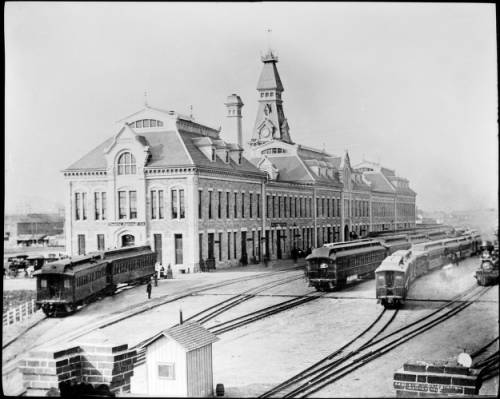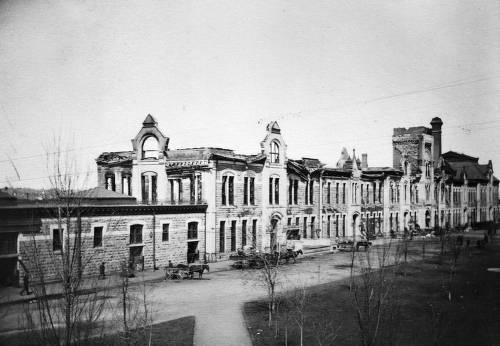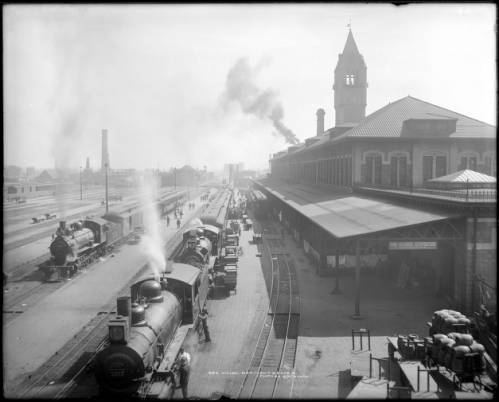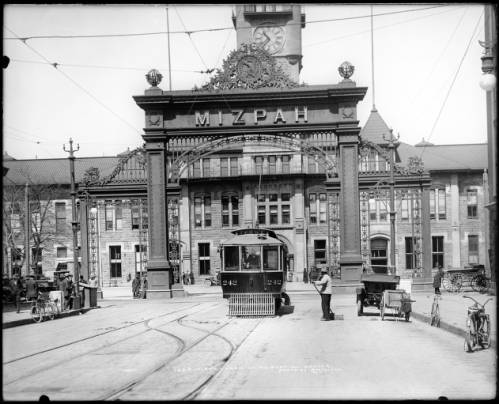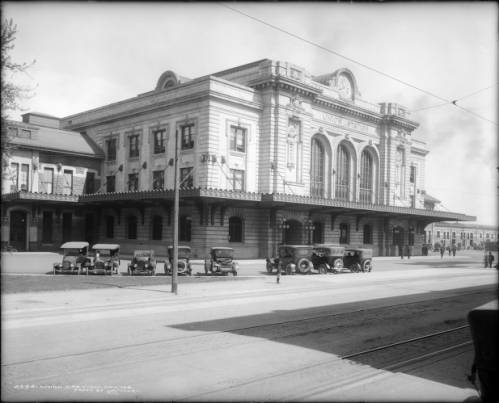A snapshot of history

On June 21, 1870 the first train arrived in Denver. At that time there was only one station for Denver Pacific Railway. Over the decade as more railroads came in to town, each built their own depots. In February 1880 the Union Depot and Railroad Company built the city’s first Union Depot to combine all the railroads into one depot. It officially opened on June 1, 1881 with a total cost of $525,000 to build.
It was quickly rebuilt with a lower roofline and a stone clock tower to replace the wooden one that burned. The new stone tower was built with clock faces on all four sides similar to the original wooden tower that burned.
July 4, 1906, an iron arch was added by the city to welcome travelers. According to Mayor Robert Speer the arch was meant “to stand for the ages as an expression of the love, good wishes, and kind feeling of the citizens to the stranger who enters our gates”. The arch originally featured the word “Welcome” on both sides. In 1908 the 17th Street side was changed to “Mizpah”, a Hebrew word for “Watchtower”. Taken from Genesis 31:19, which says “May the Lord keep watch between you and me when we are away from each other. “. Over time the word has become to mean an emotional bond between people who are separated. It was used as a farewell or goodbye to people leaving Denver through the Union Depot. Sometime in the 1920s over 200 light bulbs were added to light the arch with electric lights. After years of not being well maintained, it was eventually removed because it was in need of repair and had become a hazard to traffic. The Welcome Arch was dismantled at the city’s expense on December 7, 1931.
In 1912 the partnership of the original Union Depot broke up and the Denver Terminal Railway Company took its place. The new ownership decided to demolish the center portion along with the stone clock tower and rebuilt it to handle increasing passengers. They decided to build the new center portion in Beaux-Arts style sometimes called Beaux-Art Classicism, American Renaissance or Academic Classicism. This style became an architectural favorite in the United States for government and institutional buildings such as train stations. The new center portion was completed and reopened in 1914 with a new name of Union Station, as you see it to this day.
In 2012 a major renovation started and the station reopened in 2014.
Thanks for wandering with us,
The Wandering Couchs

